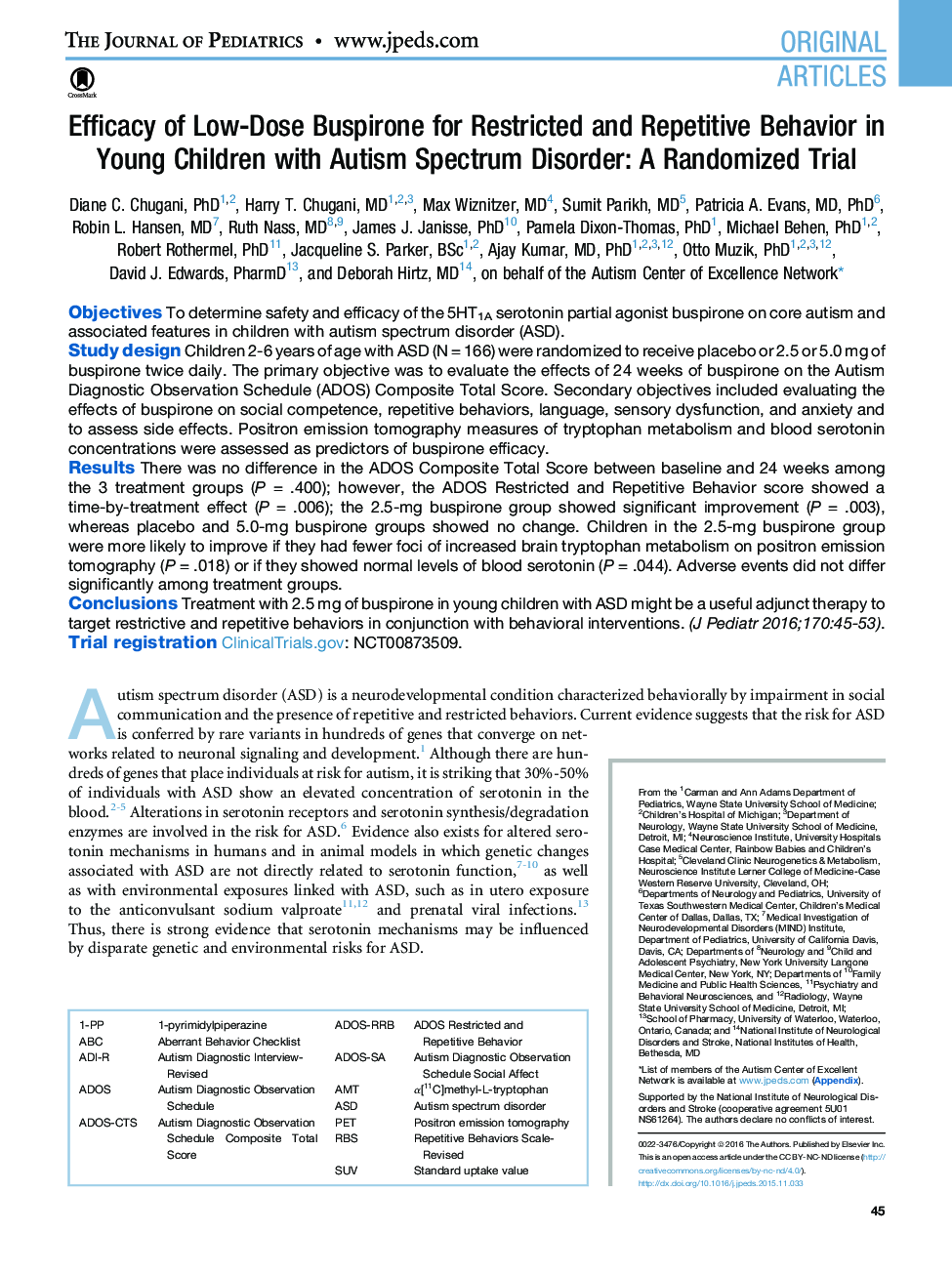| Article ID | Journal | Published Year | Pages | File Type |
|---|---|---|---|---|
| 6219054 | The Journal of Pediatrics | 2016 | 13 Pages |
ObjectivesTo determine safety and efficacy of the 5HT1A serotonin partial agonist buspirone on core autism and associated features in children with autism spectrum disorder (ASD).Study designChildren 2-6 years of age with ASD (N = 166) were randomized to receive placebo or 2.5 or 5.0 mg of buspirone twice daily. The primary objective was to evaluate the effects of 24 weeks of buspirone on the Autism Diagnostic Observation Schedule (ADOS) Composite Total Score. Secondary objectives included evaluating the effects of buspirone on social competence, repetitive behaviors, language, sensory dysfunction, and anxiety and to assess side effects. Positron emission tomography measures of tryptophan metabolism and blood serotonin concentrations were assessed as predictors of buspirone efficacy.ResultsThere was no difference in the ADOS Composite Total Score between baseline and 24 weeks among the 3 treatment groups (P = .400); however, the ADOS Restricted and Repetitive Behavior score showed a time-by-treatment effect (P = .006); the 2.5-mg buspirone group showed significant improvement (P = .003), whereas placebo and 5.0-mg buspirone groups showed no change. Children in the 2.5-mg buspirone group were more likely to improve if they had fewer foci of increased brain tryptophan metabolism on positron emission tomography (P = .018) or if they showed normal levels of blood serotonin (P = .044). Adverse events did not differ significantly among treatment groups.ConclusionsTreatment with 2.5 mg of buspirone in young children with ASD might be a useful adjunct therapy to target restrictive and repetitive behaviors in conjunction with behavioral interventions.Trial registrationClinicalTrials.gov: NCT00873509.
